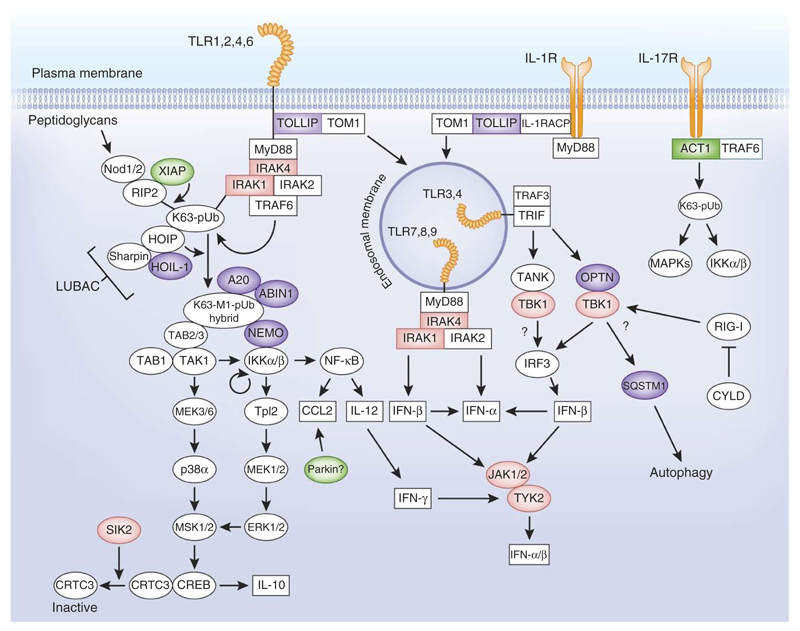Figure 1.
Components of the ubiquitin system and protein kinases whose mutation causes or may predispose to human immune diseases. Highlighted are the polyubiquitin-binding proteins (purple), the E3 ubiquitin ligases (green) and the protein kinases (red) discussed in this review. Receptors are shown in orange. The figure indicates where these components are thought to be positioned in the signaling networks initiated by the activation of TLRs and the IL-1 and IL-17 receptors. The figure represents a generic myeloid cell. Owing to space limitations, not all the events described in the text are depicted. pUb, polyubiquitin; TAB1, TAK1-binding protein; MSK1/2, mitogen- and stress-activated kinases 1 and 2; ERK1/2, extracelullar signal–regulated kinases 1 and 2; p38α, p38α MAP kinase; MEK1/2, ERK kinases 1 and 2.

